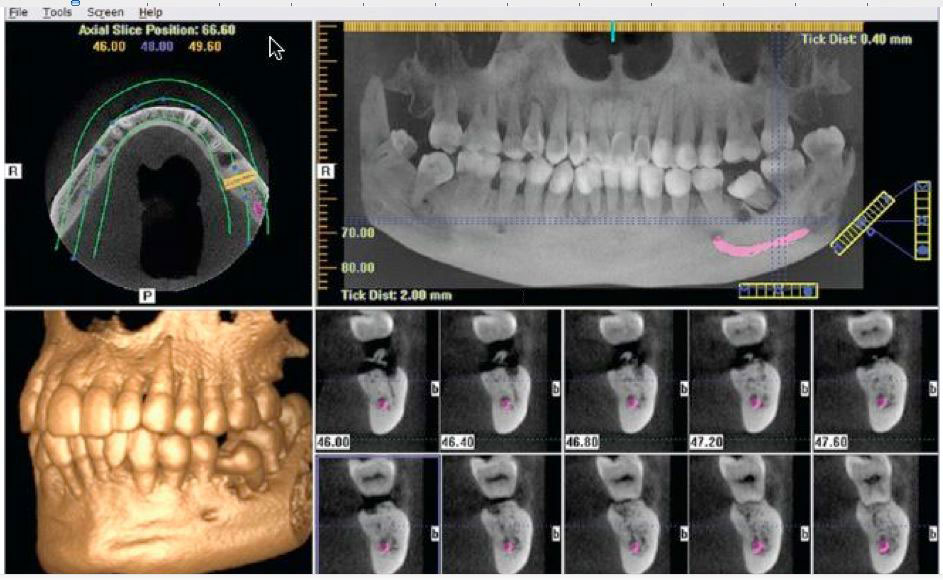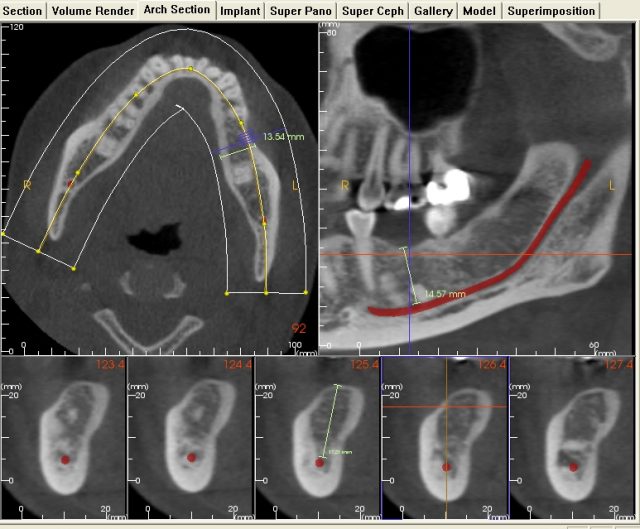Cone Bean Computerised Tomography (CBCT)

Cone-beam computed tomography (CBCT) is a new medical imaging technique that generates 3-D images at a lower cost and absorbed dose compared with conventional computed tomography (CT). This imaging technique is based on a cone-shaped X-ray beam centred on a 2-D detector that performs one rotation around the object, producing a series of 2-D images. These images are re-constructed in 3-D using a modification of the original cone-beam algorithm. Images of the craniofacial region are often collected with a higher resolution than those collected with a conventional CT. In addition, the new systems are more practical, as they come in smaller sizes.

Lower Jaw CBCT
Reconstruction demonstrating the identification and tracking of the important anatomical structures in the lower jaw. This is critical in planning and surgical placement of dental implants. A CBCT should be considered in all cases where implant placement may encroach on anatomical structures
Today, much attention is focused on the clinical applications—diagnosis, treatment and follow-up—of CBCT in the various dental disciplines.









